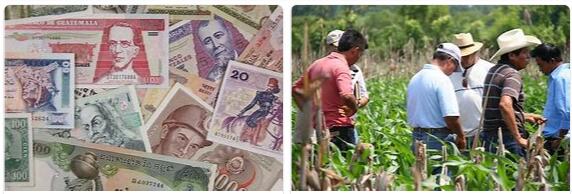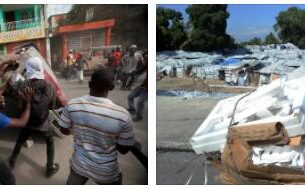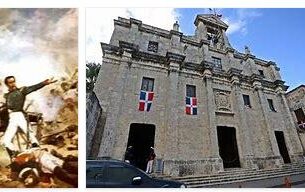ECONOMY: GENERAL INFORMATION
The country’s economy is heavily conditioned by the colonial legacy and the influence of multinational companies. The Spaniards used indigenous forced labor for gold mining and distributed the land to officers, thus creating a land-based Creole aristocracy. The Indians were also prohibited from commercial activity, destined for the Spaniards who arrived in the country later. In 1821, after independence, there was an attempt at land reform with the confiscation of large ecclesiastical properties, but at the end of the 19th century the influence of the United States began to manifest itself, with extensive concessions to the United Fruit Company (later United Brands). Only in 1944 was a democratization of the productive structures started and the first agricultural cooperatives were formed. A period of expansion and increase in GDP followed. After apparently starting on the path of development, with significant progress in the industrial and tourist sectors, according to Cheeroutdoor, Guatemala suffered in the first half of the 1980s, also following the disastrous earthquake of 1976, a certain worsening of economic conditions, accompanied by a phase of stagnation: the fall in the value of exports and their composition thus confirmed the state of poverty in the country, resulting in a contraction in production and an increase in the number of unemployed. Only with the end of the civil war (1996), thanks to the help of numerous countries, international organizations and private associations, but also with money from drug trafficking, Guatemala has started towards normalization and in many areas of the country, with a predominance of the metropolitan area of Guatemala, construction sites have been opened for the reconstruction of homes, infrastructures and production plants, and part of the planned tax revenues for the return of the foreign debt were used in the new reconstructions. The very strong demographic growth, however, negatively impacted the already modest income per capita, which in 1998 underwent a further and significant reduction. To remedy these adverse economic and structural conditions, the government has carried out a reconstruction work, thanks also to the currency revenues obtained with the privatizations, by extending the electricity network and improving the water supply systems.
Despite the conditions of backwardness and widespread poverty, the country is moving towards productive diversification, in order to achieve more balanced growth between the different regions and between social strata. However, the process of freeing oneself from dependence on plantation crops proceeds rather slowly; moreover, although the inflow of foreign capital is increasing, the country is not yet fully capable of creating a fertile environment for the emergence of new businesses. L’ agriculture, which is still an important source of income, continues to present the ancient dualism between the stunted activity, in practice of pure subsistence, conducted by the Indians on the poorest micro-funds and the great prosperity of commercial agriculture (the main product is coffee), which uses vast plantations located in the best areas, owned by a few local landowners and foreign multinationals, first of all United Brands. The industrial sector is more dynamic, despite being largely controlled by foreign capital and hardly resisting competition from Mexico. The tertiary sector, on the other hand, has acquired increasing importance thanks to the tourism boom, the increase in foreign trade and the increase in the banking system, which occurred at in the aftermath of the end of the civil war. Foreign debt, although increasing, is among the smallest in Latin America; inflation also appears to be under control. In 2008, the GDP was US $ 38,956 million, with one GDP per capita of US $ 2,848; the distribution of income nevertheless remains very uneven, to the point that more than half of the population continues to live below the poverty line.
ECONOMY: TRADE, COMMUNICATIONS AND TOURISM
The tertiary sector, as a whole, participates for 59.1% in the formation of the GDP and employs 45.6% of the workforce. There is a strong increase in trade with foreign countries, even if the trade balance is often passive. Guatemala mainly exports plantation products (for 70% of the total), such as coffee, sugar, bananas, followed by cardamom, oil, cotton and meat, while it mainly imports machinery and means of transport, various artifacts, fuels, materials from construction, chemicals and, to a lesser extent, foodstuffs (cereals). Trade takes place mainly with the United States (which account for about two-fifths of exports and one third of imports), followed by El Salvador, Honduras, Mexico, Nicaragua and Costa Rica for exports and Mexico, China, El Salvador and South Korea for imports. In 2005, a customs union with Honduras, El Salvador and Nicaragua entered into force.
Communications have their axes in Pan-American Carretera, which runs on the cordillera and crosses the country for 830 km, and in the roads that connect the capital with Puerto Barrios, the main Guatemalan sea outlet, and the other more active ports, such as Puerto San José and Champerico on the Pacific coast (in total there there are 14,044 km of roads, of which 5463 km are paved). Important ports, in addition to those already mentioned, are Santo Tomás de Castilla, Matiás de Gálvez and Puerto Quetzal. On the other hand, the railway is lacking (886 km in 2006), at the primary service of the plantations; the main line is the Puerto Barrios-Guatemala-Puerto San José. The main airports are that of the capital, La Aurora and that of Santa Elena Petén. § Tourism is an important source of income (the second after coffee); with the improvement of the internal situation, in fact, there has been an increase in visitors, mainly attracted by the archaeological sites of the Mayan civilization and by the landscape and monumental beauties of the country. The increase in tourists has favored the improvement of infrastructures and services, mainly in the capital, in Antigua and in the area of Lake Atitlán.



